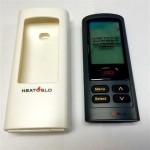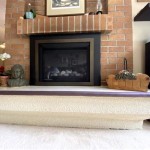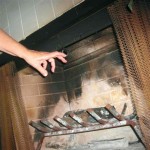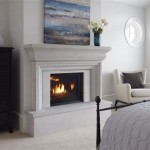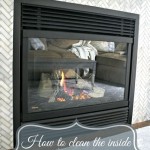Fireplace Child Safety Gates: Protecting Children from Fireplace Hazards
Fireplaces, while providing warmth and ambiance, pose significant safety risks to young children. The open flames, hot surfaces, and sharp edges inherent in fireplace design necessitate preventative measures to ensure children's safety. A fireplace child safety gate serves as a physical barrier, mitigating the risk of burns, accidental contact with flames, and other injuries. This article will explore the importance of fireplace child safety gates, the factors to consider when choosing one, and proper installation and maintenance techniques.
Understanding the Risks Associated with Fireplaces and Children
Fireplaces present a multifaceted range of dangers to young children. The most obvious risk is the open flame itself. Young children are naturally curious and may be drawn to the light and movement of the fire. Unsupervised access can easily result in severe burns. Even when the fire is not actively burning, the bricks, metal components, and glass fronts of a fireplace remain hot for extended periods. Children who touch these surfaces can sustain painful burns, particularly infants and toddlers whose skin is more sensitive.
Furthermore, the edges and corners of a fireplace, especially those constructed from brick or stone, can be sharp and unforgiving. A fall against these surfaces can result in cuts, bruises, or more serious head injuries. Fireplace tools such as pokers, shovels, and tongs, if left within reach, also pose a risk. Children may attempt to play with these tools, potentially injuring themselves or others.
Additionally, the air quality around a functioning fireplace can be a concern. Smoke, even from a well-maintained fireplace, can irritate a child's respiratory system, particularly for children with asthma or other respiratory conditions. While not directly related to physical injury, poor air quality contributes to the overall hazards associated with fireplaces and children.
Key Considerations When Choosing a Fireplace Child Safety Gate
Selecting the appropriate fireplace child safety gate requires careful consideration of several factors. The dimensions of the fireplace opening are paramount. Accurately measuring the width and height of the area to be protected is crucial for ensuring a proper and secure fit. A gate that is too small will not adequately cover the opening, while a gate that is too large may be difficult to install and may not provide a secure barrier.
The material of the gate is another important consideration. Metal gates constructed from steel or iron are generally the most durable and heat-resistant options. These gates can withstand the high temperatures near a fireplace without warping or melting. Wood gates, while aesthetically pleasing, may not be as heat-resistant and may pose a fire hazard if placed too close to the fireplace. Plastic gates are generally not recommended for fireplace use due to their low heat resistance and potential to melt or emit harmful fumes.
The gate's locking mechanism should be secure and easy for adults to operate, but difficult for children to manipulate. Look for gates with features such as double-locking mechanisms, auto-close features, and sturdy latches that cannot be easily opened by small hands. The ease of installation is also an important factor, especially for individuals who are not experienced with home improvement projects. Opt for gates that come with clear instructions and all necessary hardware. Consider whether the gate needs to be portable or is intended for permanent installation affecting mounting options.
Finally, consider the overall design and aesthetics of the gate. While safety is the primary concern, it is also desirable to choose a gate that complements the existing decor of the room. Fireplace child safety gates are available in a variety of styles and finishes, allowing homeowners to select a gate that is both functional and visually appealing. Furthermore, the design should be free of sharp edges or small parts that could pose a choking hazard.
Installation and Maintenance of Fireplace Child Safety Gates
Proper installation is crucial for ensuring the effectiveness of a fireplace child safety gate. Before beginning the installation process, carefully read and understand the manufacturer's instructions. Ensure that all necessary tools and hardware are readily available. The gate should be securely anchored to the surrounding walls or fireplace structure using appropriate mounting hardware. Avoid using adhesive-based mounting solutions, as these may not provide sufficient support and can fail over time, particularly when exposed to heat.
For gates that require drilling, accurately mark the locations of the mounting holes and use the correct drill bit size to avoid damaging the walls or fireplace. Ensure that the anchors are securely fastened and that the gate is properly aligned. After installation, thoroughly test the gate to ensure that it opens and closes smoothly and that the locking mechanism is functioning correctly. Regularly inspect the gate for any signs of damage or wear and tear. Check the mounting hardware for looseness and tighten as needed. If the gate is damaged or malfunctioning, refrain from using it until it has been repaired or replaced.
Regular cleaning is also essential for maintaining the appearance and functionality of a fireplace child safety gate. Use a mild detergent and warm water to clean the gate's surface, removing any dirt, dust, or soot. Avoid using abrasive cleaners or solvents, as these can damage the finish of the gate. For metal gates, consider applying a rust-resistant coating to prevent corrosion. Inspect the locking mechanism regularly and lubricate as needed to ensure smooth operation. By following these installation and maintenance guidelines, homeowners can ensure that their fireplace child safety gate provides a safe and effective barrier against fireplace hazards.
Types of Fireplace Child Safety Gates
There are various types of fireplace child safety gates available, each with its own advantages and disadvantages. Understanding the different types can help homeowners choose the gate that best suits their specific needs and fireplace configuration. Freestanding gates are typically lightweight and portable, making them suitable for temporary use or for fireplaces that are not regularly used. These gates are easy to set up and require no drilling or mounting, but they may not be as stable as other types of gates.
Wall-mounted gates offer a more secure and permanent solution. These gates are attached to the surrounding walls using screws or other hardware, providing a sturdy barrier that is less likely to be moved or tipped over. Wall-mounted gates are available in a variety of styles and sizes, and they can be adjusted to fit different fireplace openings. However, they require more complex installation and may leave holes in the walls when removed.
Hearth gates are specifically designed to enclose the entire hearth area, providing a larger safety zone around the fireplace. These gates are typically constructed from multiple panels that can be configured to fit a variety of hearth shapes and sizes. Hearth gates are ideal for fireplaces with large hearths or for homes with multiple young children. However, they can be more expensive and may require more space than other types of gates.
Retractable gates offer a space-saving solution for homes with limited space. These gates feature a mesh or fabric panel that retracts into a housing when not in use. Retractable gates are easy to install and operate, and they can be quickly opened and closed as needed. However, they may not be as durable as other types of gates and may not be suitable for fireplaces with high heat output.
Extending the Life and Effectiveness of a Fireplace Gate
To maximize the lifespan and effectiveness of a fireplace child safety gate, consider implementing some additional measures. Keep the area around the fireplace clear of clutter and obstacles. This will not only prevent children from tripping and falling near the fireplace but also ensure that the gate can be easily opened and closed. Regularly educate children about the dangers of the fireplace and the importance of staying away from it.
Supervise children when they are near the fireplace, even when the gate is in place. A gate is not a substitute for adult supervision. Teach children to respect the gate and not to climb on it or attempt to open it. Consider using fireplace screens in addition to a safety gate. Fireplace screens provide an additional layer of protection against sparks and embers that can escape from the fireplace. Screens also help to reduce the risk of burns from touching the hot glass or metal surfaces of the fireplace.
Periodically inspect the fireplace itself for any potential hazards. Cracks in the firebox, loose bricks, or damaged flue liners can create fire hazards that could compromise the safety of the home. Have the fireplace professionally inspected and cleaned annually to ensure that it is in good working order. When choosing a fireplace child safety gate, prioritize those with certifications from reputable safety organizations. These certifications indicate that the gate has been tested and meets established safety standards.

Wood Stove Gas Hearth Gate G3111g4301 G4311 Friendly Fires

Buy Safety Gate With 5 Elements Fireplace Baby Tectake

Jaxpety Fireplace Baby Gate Dog For House Stairs Doorways Pet With Door Lock 5 Panel 118 Inch Black Com

3 Ways To Baby Proof A Fireplace Wikihow

Jaxpety Safety Gate 5 Panel Fireplace Fence Pet Kids With Lock Steel Plastic Black Com

How To Baby Proof Your Fireplace Pa Guide Proofing Home Safety

Babyproof Your Hearth And Fireplace With These Simple Tips Tricks

Buy Safety Gate With 5 Elements Fireplace Baby Tectake

Regalo Super Wide Baby Gate And Playard White Babylist

Hommoo Metal Fireplace 5 Panel Baby Safety Gate With Door Black Com
Related Posts



